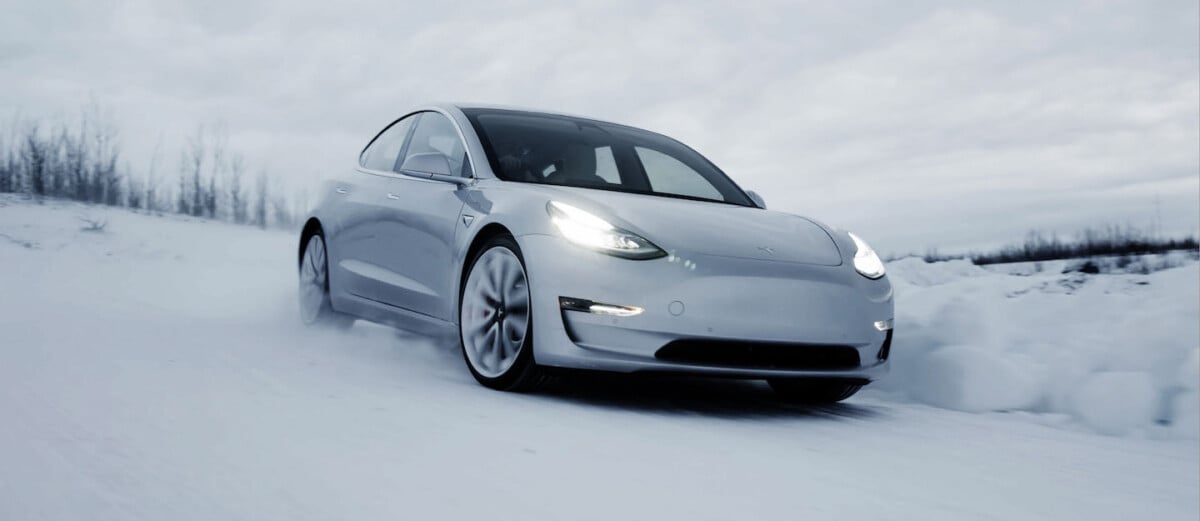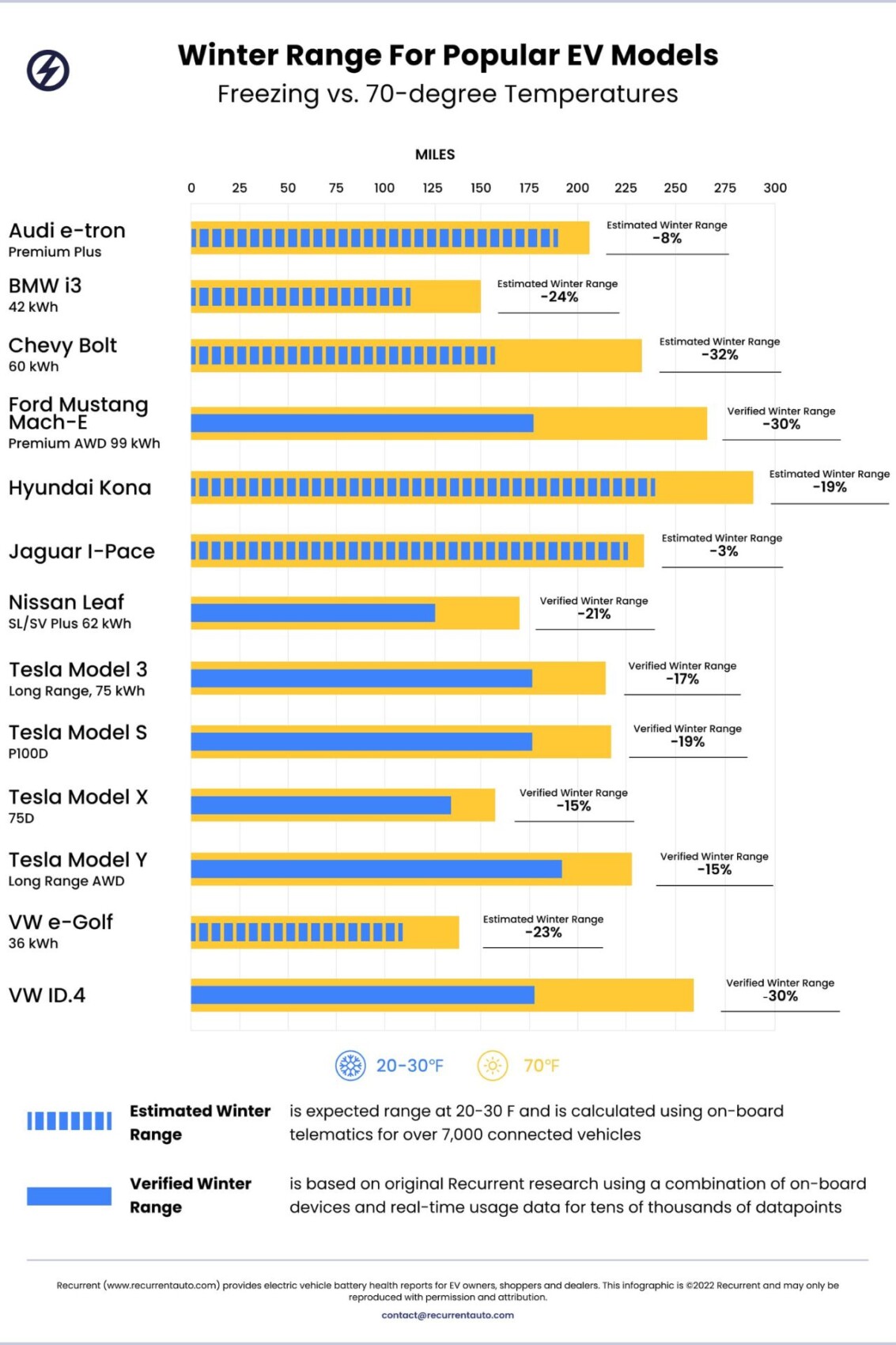The range of an electric car varies greatly depending on road conditions and temperatures. But to what extent ? This is what the company Recurrent wanted to know, which compared twelve different models in winter. And the results are very variable.
Winter is coming and that’s not necessarily good news for everyone. In addition to degraded road conditions and poor grip, which can be offset by socks or snow chains, the cold also has an impact on car fuel consumption. If this is the case for thermal models, it is especially electric vehicles that are the most affected. ‘Cause it’s a fact this engine does not really like winter.
The cold, enemy number 1
Indeed, when temperatures drop, the consumption of electric cars increases, with an increase of up to 30% sometimes.
In question, the cold battery which needs energy to reach an optimal temperature, as well as the use of heating for passenger comfort. But also because of the tension which decreases within the cells. As a result, autonomy then melts like snow in the sun. But that’s not all. Because the cold also has an impact on charging.
Again, this has to do with the battery cells, which have a nominal operating temperature of between 25 and 35°. If this is not achieved, then the accumulator will not be able to withstand a high load power, even if you connect your car to a 300 kW terminal. As a result, the charging time is extended.
All this therefore has an impact on the autonomy of the car, which then varies according to the models. This is precisely what the company is interested in Recurrent, which provides battery monitoring solutions for electric vehicles. This data is then stored and then analyzed and compared. Thus, the American company was able to establish a ranking of the models most affected by the winter cold.

Recurrent therefore compared the autonomy of 12 electric cars at an optimal temperature of 21 degrees, then between -6 and -1 degrees. Two methods were used, either by using data recorded in real conditions or via estimates, based on the on-board telemetry of the cars and the data announced by the manufacturers. This therefore remains rather theoretical in the 2nd case.
Strong disparities
And the least we can say is that‘there are major differences between the models evaluated. According to the classification of Recurrent, it is the Volkswagen ID.4 which would have the most difficulty in cold weather, then losing 30% of autonomy when the temperatures are negative. A figure shared with the Ford Mustang Mach-E in its version with a 99 kWh battery. The Chevrolet Bolt loses 34% of autonomybut this data is only theoretical, the car not having been evaluated in real conditions.

On the other hand, Tesla is doing very well, placing two models at the top of the ranking of cars being the least impacted by the cold. The prize then goes to the Model Y, which would only lose 18% of autonomy between -6 and 21 degrees, while the Model X displays -19%. On the other hand, the Model 3 would lose 22% in its Long Range 75 kWh version, a value which drops to 25% for the Model S P100D.
We can cite the Audi e-tron which is doing very well, with a drop of only 8% in its autonomy between winter and summer. But it doesn’t do as well as the Jaguar I-Pace, whose range varies by just 3% between seasons.
These differences had also been verified by Norwegian Youtuber Bjørn Nyland, who tests all new models on a 1,000 kilometer journey. The goal: to achieve this distance as quickly as possible. If it is the autonomy that plays the most important role, the charging time also has an impact. And these two data then vary greatly depending on the temperatureas explained above.
To follow us, we invite you to download our Android and iOS application. You can read our articles, files, and watch our latest YouTube videos.
